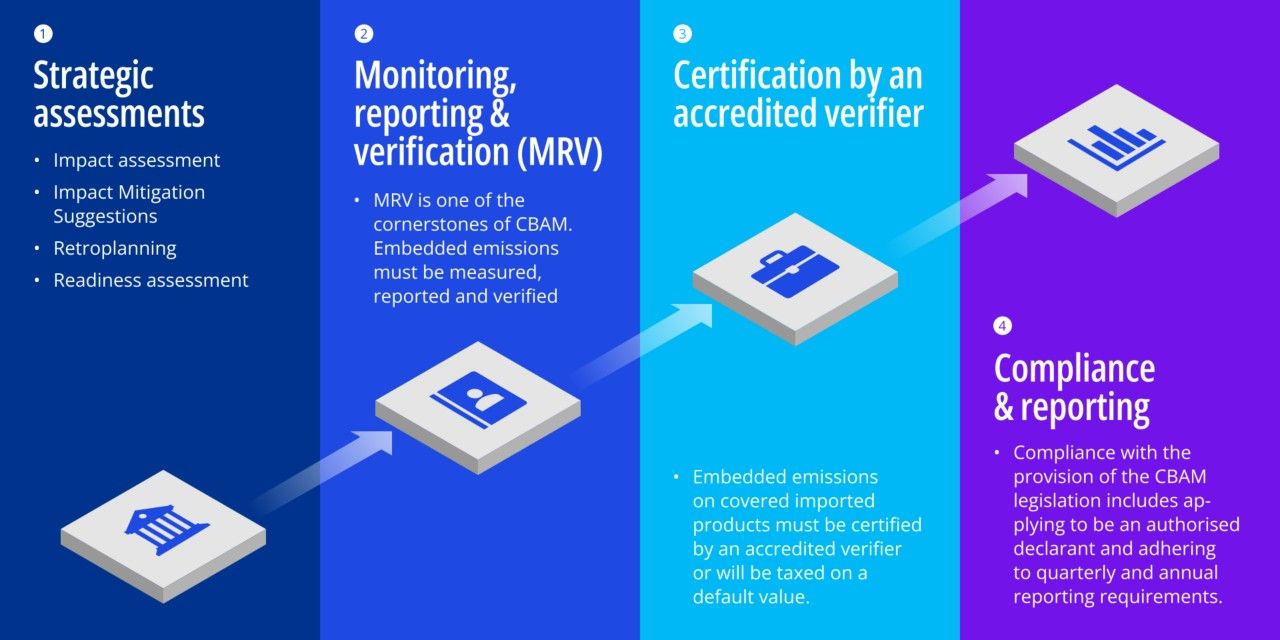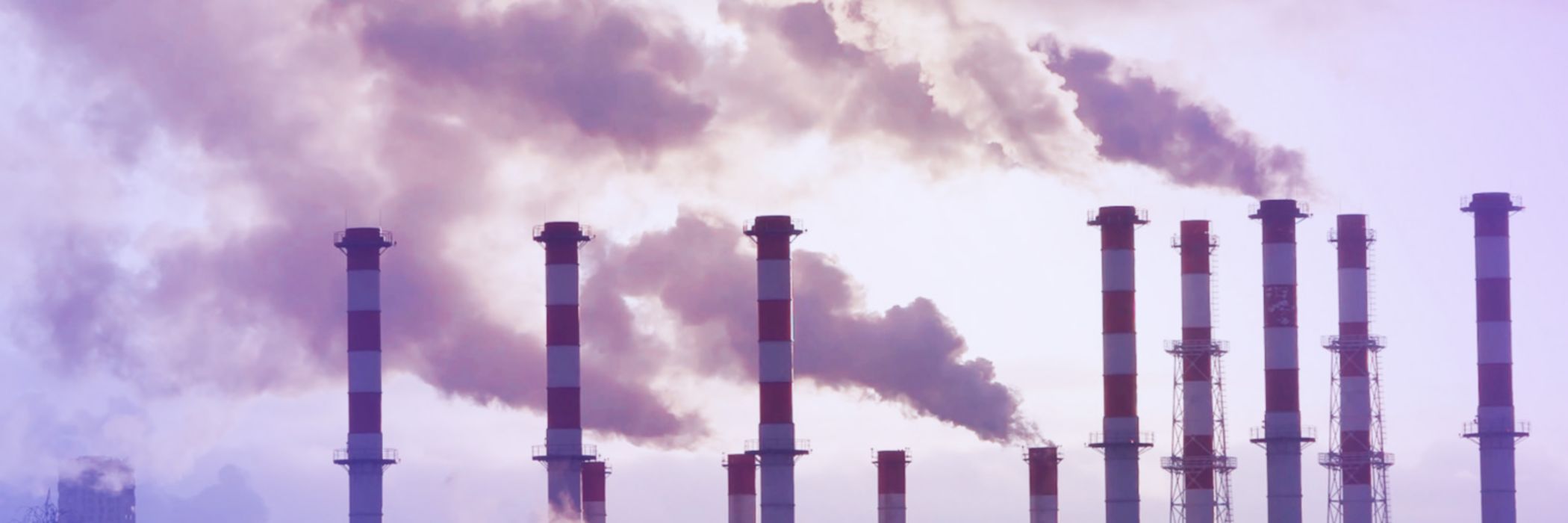Key Facts:
- The carbon border adjustment mechanism (CBAM) is part of the EU's climate policy and is intended to prevent the relocation of greenhouse gas emissions to non-EU countries in certain economic sectors.
- The CBAM came into force as part of a transition phase on October 1, 2023. Importers of the affected goods in the EU are obliged to provide quarterly information on imported goods, CO2 emissions and CO2 levies already paid in the countries of origin.
- From 2026, importers will report annually the quantity of goods imported into the EU in the previous year and the corresponding CO2 emissions.
- The manufacturing industry, which relies heavily on the goods concerned, will already be faced with a significant bureaucratic burden from this year and considerable additional costs from 2026.
Stephan Freismuth
Director, Tax
KPMG AG Wirtschaftsprüfungsgesellschaft
CO2 border adjustment: What does it mean for the manufacturing industry?
A new regulation has been in force for certain sectors in the EU since October of this year. In order to provide incentives to reduce CO2 emissions and counteract the risk of greenhouse gas emissions being shifted to non-EU countries, the EU Commission has proposed the so-called Carbon Border Adjustment Mechanism.
If products are imported into the EU accordingly, certificates must be purchased. These correspond to the CO2 price that is incurred for goods that are manufactured in accordance with the EU rules for pricing CO2 emissions. If a non-EU manufacturer can prove that a price has already been paid for the CO2, the importer can claim full credit for the corresponding costs.
The CO2 border adjustment system will be introduced gradually and will initially only apply to energy-intensive goods where there is a high risk of carbon leakage. These include fertilizers, cement, electricity, hydrogen, iron, steel, aluminium and the first primary goods made from these, such as profiles, bars, sheets or screws.

Source: KPMG, Germany, 2023
Creating incentives to reduce emissions
In order to avoid carbon leakage, energy-intensive companies have so far received free emissions trading certificates as part of the EU Emissions Trading System (ETS). This artificially mitigates CO2 costs and reduces the incentive to relocate to countries with lower CO2 prices. Although the system has proven to be effective in combating carbon leakage, it also dampens the incentive to invest in environmentally friendly production at home and abroad.
The border adjustment system is to be extended to all sectors subject to EU emissions trading by 2030. With the gradual introduction of the CBAM, the CO2 certificates allocated free of charge will be gradually reduced by the end of 2034. This should prevent emissions-intensive manufacturing activities from being relocated to countries with less stringent emissions regulations and also ensure a level playing field between EU and non-EU manufacturers in terms of CO2 emissions costs.
Although the EU Emissions Trading System and previous environmental legislation have created incentives to reduce CO2 emissions in the EU, these are not enough to stay on the 1.5°Celsius path of the Paris Climate Agreement. This requires even greater incentives, which are now being created by the Green Deal and the resulting legislative initiatives.
Everything you need to know about the CBAM at a click
We explain the CBAM and clear up misconceptions
Who is affected, what reporting obligations apply and to which product groups should the Carbon Border Adjustment Mechanism (CBAM) be applied? There are a number of false assumptions and myths surrounding the new regulation. We clarify and set the record straight. You can also read the blog post by our expert Stephan Freismuth.
Transition phase without financial obligations
With the CO2 border adjustment system, from 2026, emission allowances for greenhouse gas emissions contained in certain goods produced in countries outside the EU will have to be purchased when they are imported into the EU. During the planned transition phase, which started on October 1, 2023, importers will be obliged to report the greenhouse gas emissions associated with their products without having to purchase emission allowances.
During this period, importers must submit a quarterly CBAM report in electronic format directly to the EU Commission. This contains information on the quantity of imported goods, the direct and indirect CO2 emissions and the CO2 price due in the country of origin for the emissions in the imported goods.
As soon as the system comes into force on January 1, 2026, importers will be obliged to declare the quantity of goods imported into the EU in the previous year and the greenhouse gas emissions contained therein by May 31 each year. The corresponding number of CBAM certificates required will then be calculated from this.

Source: KPMG, Germany, 2023
Information on the CO2 emissions of goods subject to CBAM is to be provided to EU-registered importers by manufacturers outside the EU. If the information is not available when the goods are imported, EU importers can use default values of the CO2 emissions of the respective goods to determine how many certificates they need to purchase.
The obligation to register as an authorized CBAM declarant will already apply from 1 January 2025. The customs authorities will check for each import whether the customs declarant (= importer) is authorized as an authorized CBAM declarant. If an importer does not have this authorization, the goods will not be released by the customs authorities. In addition, from 2026, only authorized declarants who have received a separate permit will be entitled to declare products covered by CBAM for import. The customs permit can be applied for from December 31, 2024. The declarants must then purchase emission certificates from the relevant CBAM authority.
CO2 pricing regardless of country of origin
The simultaneous abolition of free CO2 allowances within the EU means that companies in the affected industries, regardless of whether they source their raw materials from the EU internal market or third countries, will be confronted with rising costs to the same extent.

Manufacturing industry at the center of the regulation
The CO2 border adjustment system will initially be applied to emissions generated during the production of iron, steel, aluminium, cement, electricity, fertilizers and hydrogen. Raw materials that are used to a particularly high degree in the manufacturing industry. Individual downstream products and preliminary products are also included.
The steel industry alone is responsible for 30 percent of industrial emissions in Germany. The abolition of free certificates and the introduction of full pricing for greenhouse gas emissions will significantly increase costs.
More bureaucracy, higher costs: there is a need for action
Reducing CO2 emissions from energy-intensive industries is a key element in achieving the European climate protection targets. In order to drive forward technology investments in a timely manner and avoid the threat of relocation trends, the pricing of CO2 emissions will be an indispensable control element in the future. Companies that rely on one of the raw materials affected by CBAM for their production should already be preparing for rising prices and the establishment of new reporting structures.
CBAM: How to implement it in four steps


Source: KPMG, Germany, 2023


